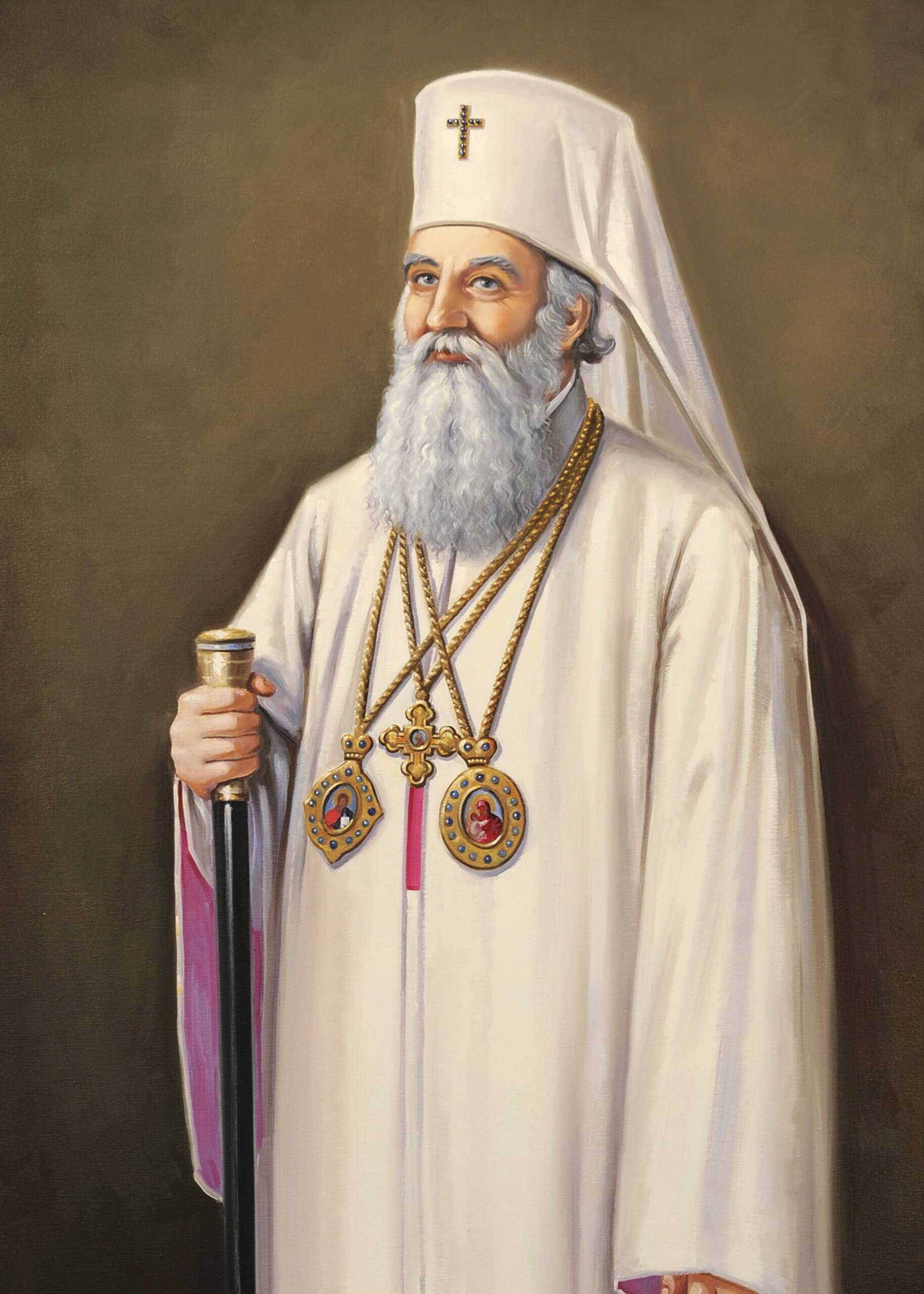The Patriarchs of Romania
Patriarch Miron Cristea
Patriarch Miron Cristea remains in the collective memory as the founder of the Romanian Patriarchate and a promoter of the dignity of the Romanian Orthodox Church in modern times. He had a strong sense or awareness of the institution and was a diligent and capable man. He learned from both Romanians and foreigners whatever was beneficial for the Church and the Romanian nation. He fought from his youth until the end of his life for the Romanian dignity of the Country and the Church.

Life and work
He was born on July 18, 1868, in Toplița, Harghita County. At baptism, he was given the name Ilie. He attended the Romanian confessional school in Toplița, the Evangelical Lutheran (Saxon) Gymnasium in Bistrița (1879–1883), the Romanian Greek-Catholic Secondary School in Năsăud (1883–1887), the “Andreian” Theological Institute in Sibiu (1887–1890), and the Faculty of Letters and Philosophy at the University of Budapest (1891–1895), where he earned his doctorate with the thesis: Viața și opera lui Eminescu (Life and work of Eminescu).
He worked as a teacher and director of the Romanian confessional school in Orăștie (1890–1891) and as secretary to the Archbishop in Sibiu (1902–1909). He was tonsured a monk at Hodoș-Bodrog Monastery (1902), taking the name Miron. He was ordained hieromonk on April 13, 1903, and later elevated to the rank of protosyncellus on June 1, 1908. On November 21 / December 3, 1909, he was elected Bishop of Caransebeș, and ten years later, on December 18 / 31, 1919, he was elected Metropolitan-Primate of Unified Romania. With the elevation of the Romanian Orthodox Church to the rank of Patriarchate, he became its first Patriarch on February 4, 1925. He passed away on March 6, 1939, in Cannes, France, and was buried in the Patriarchal Cathedral in Bucharest.
As Bishop of Caransebeș, he defended the confessional schools in Banat against attempts by the Budapest government to supress them. He participated in the Great National Assembly in Alba Iulia (December 1, 1918). As a member of the delegation of Romanians from Transylvania, he presented the Act of Union to King Ferdinand I. He also held public positions, although he did not belong to any political party: he was a member of the Regency (1927–1930) and served as Prime Minister (February 10, 1938 – March 6, 1939).
During his patriarchate, the Romanian Orthodox Diocese in America was received under the jurisdiction of the Romanian Patriarchate (1930); the current Patriarchal Residence was built (1927–1931); and the Romanian Settlement in Jerusalem was constructed (1935–1938). He also supported the translation and publication of the Bible (the 1936 Synodal Edition) and advocated for the construction of a new Patriarchal Cathedral, which he called the “People’s Salvation Cathedral.”
Culturally, he supported the Biserica Ortodoxă Română magazine, founded the Biblical Institute and the Theological Seminary for war orphans in Câmpulung-Muscel (1922), and initiated the Apostolulmagazine of the Archdiocese of Bucharest. During his leadership, the calendar was revised (1924). He supported theological education by sending young theologians to study abroad. For his outstanding cultural and national contributions, he was elected an honorary member of the Romanian Academy on June 7, 1919.
Works
From his publishing activity one can mention: Arhiepiscopul și Mitropolitul Roman Romanul (Sibiu, 1898), published under the pseudonym “Ilie Dinurseni”; Proverbe, maxime, asemănări, idiotisme, colectate din graiul românilor din Transilvania și Ungaria (Sibiu, 1901); Iconografia și întocmirile din internul (interior) bisericei răsăritene (Sibiu, 1905); Catedrala mitropolitană din Sibiu. Istoricul zidirii(Sibiu, 1908); Pastorale, predici și cuvântări (5 vol., Bucharest, 1923, 1938, 1939).
Eulogy
His Beatitude Daniel,
Patriarch of the Romanian Orthodox Church